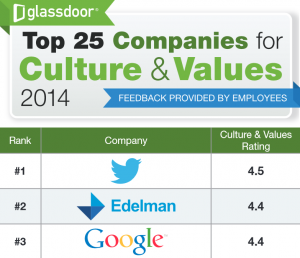In CEOs Take on Twitter, Business Week looked at the Twitter pages of some C-level execs, and asked them for brief comments about their Twitter use. The result was actually very interesting. Since almost all of the people they looked at are in the high tech/social media/PR/etailing sector anyway (think Zappos, TechCrunch, Sun), it’s perhaps not surprising that they are tuned in to the Twitterverse. But taken together, their insights about tweeting make up a pretty good index of what makes Twitter important.
The sole outlier in this tech-heavy group was Michael Hyatt, CEO of Thomas Nelson Publishers. (For those who don’t follow the book trade, Thomas Nelson is the leading publisher of bibles and Christian books.) Hyatt describes himself as an avid blogger—and a quick review of his Twitter page reveals frequent tweets that mix the personal with the informative. Most important: They do not appear to be churned out by staffers.
The Business Week story appeared in August of 2008, so in a way it’s old news. But the time lapse permits us to see what has happened to the profiled tweeters in the meantime. And we find out that Michael Hyatt—whose stats in the article were Following: 146, Followers: 1,059, and Updates: 2,045—now has (wait for it) 74,776 Followers and has racked up an impressive 9,809 Tweets. He is Listed 2,124 times.
Hyatt’s Twitterstream is a textbook example of how to convey personality online (“We just finished Vespers. Now off to a birthday party.”) and engage community (“I’m giving away 50 free copies of [book title].”) He answers nerdy questions (“Yes, I just used the Amazon Associates tools, plus a little CSS styling.”) and describes relatable experiences (“We had such an amazing evening. There is something so healing about being with people who know and understand you.”) Along the way he slips in PR for his blog (“I have two ads left for sale on my blog for March . . . ”)
He retweets his family’s updates (daughter Marissa is chronicling her attempt to quit smoking) along with links to useful content (“7 Ways to Build Your Author Brand Online”), relevant events, and topical stories. Last but not least—and best of all, or worst, depending on how you look at it—he ghost-tweets a Twitterstream for his dog, @NelsonHyatt. Sample: “I can’t believe @MIchaelHyatt left me in the car while he went browsing in the bookstore. Hello! Obviously, I can read!”
@Nelson has 464 Followers and he answers all their comments.
@Michael almost never mentions Thomas Nelson directly, by the way—just an occasional oblique reference, like this one from 15 minutes ago: “I’m sitting in a Nonfiction Publication Board, discussing five prospective new books. Excellent proposals!” That tweet demonstrates exactly how to evoke positive impressions of a company without appearing in the least promotional.
I’ll follow up on some of the other Tweeters profiled in Business Week, and if there’s anything interesting, there will be another post. But in the meantime . . . anyone who wants to see corporate tweeting done well for a mainstream company should take a look at Hyatt’s achievement. Though it’s not the only good approach, it’s an example of one that works.
(Thanks to rvacapinta for the original boardroom photo. It’s been modified a bit for this illustration.)
Cynthia Giles has followed a serpentine career path from academia to publishing to marketing and design to information technology and corporate communications. There’s plenty of detail about this journey at www.cynthiagiles.com, but briefly--the common theme has been ideas, and how to present them effectively. Along the way, she became an accidental expert on data warehousing and business intelligence, and for the past ten years she has combined corporate contracting with an independent consulting practice that focuses on marketing strategy for smaller businesses and non-profits.
Having spent quite a bit of time looking for work, and anywhere from two weeks to two years inside a wide variety of American companies—she has given much thought to what works (and what doesn’t) when it comes to creating a great employment fit.


